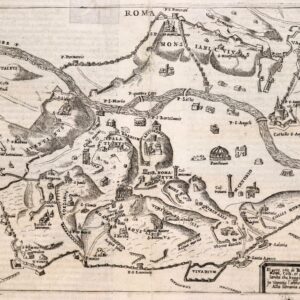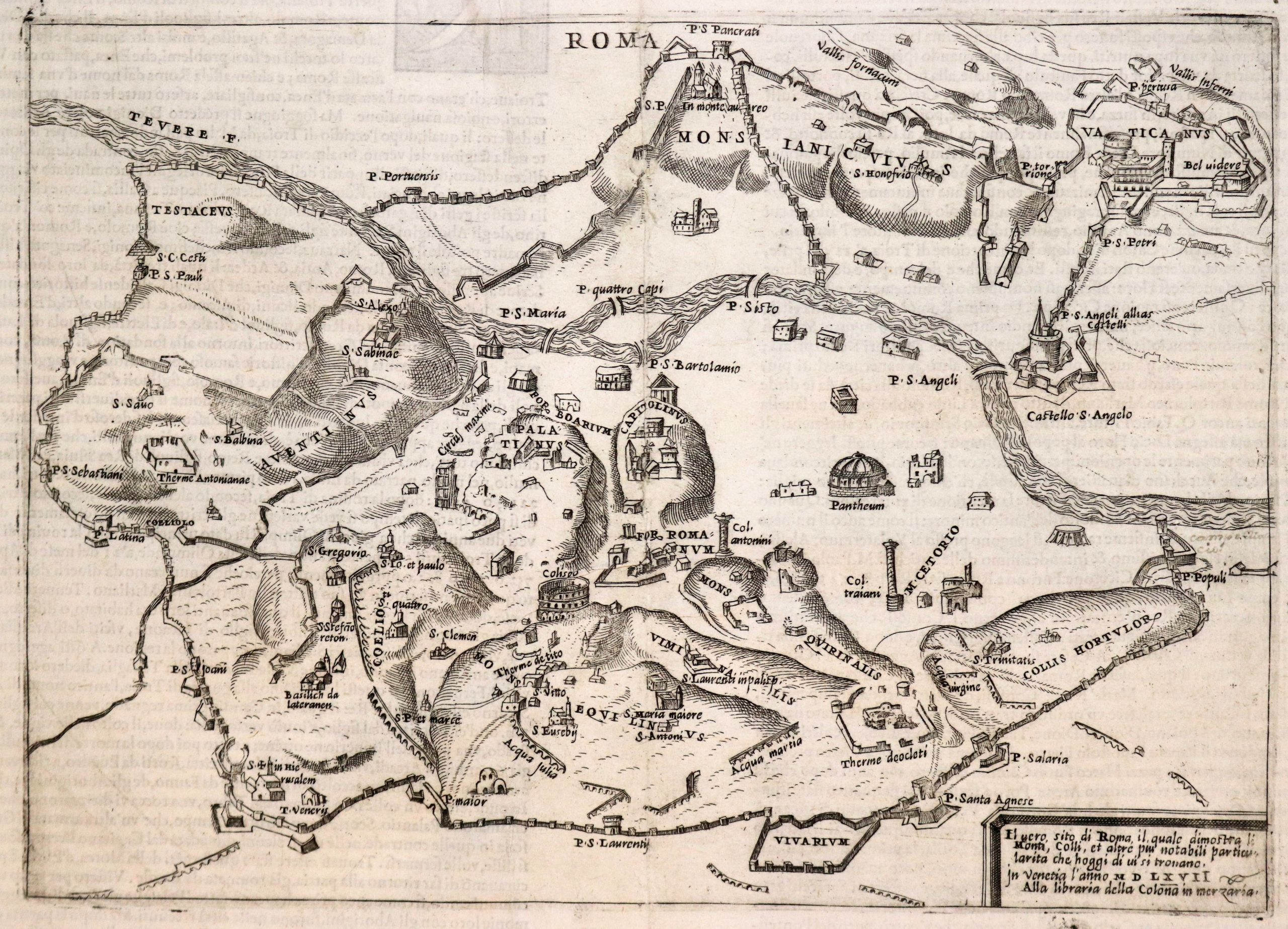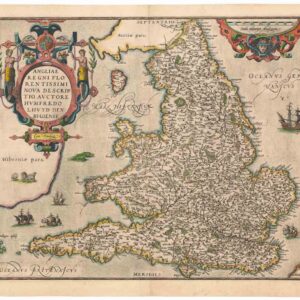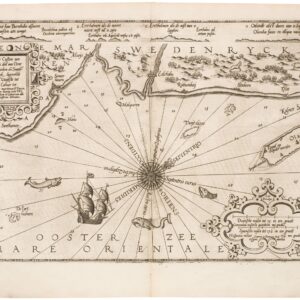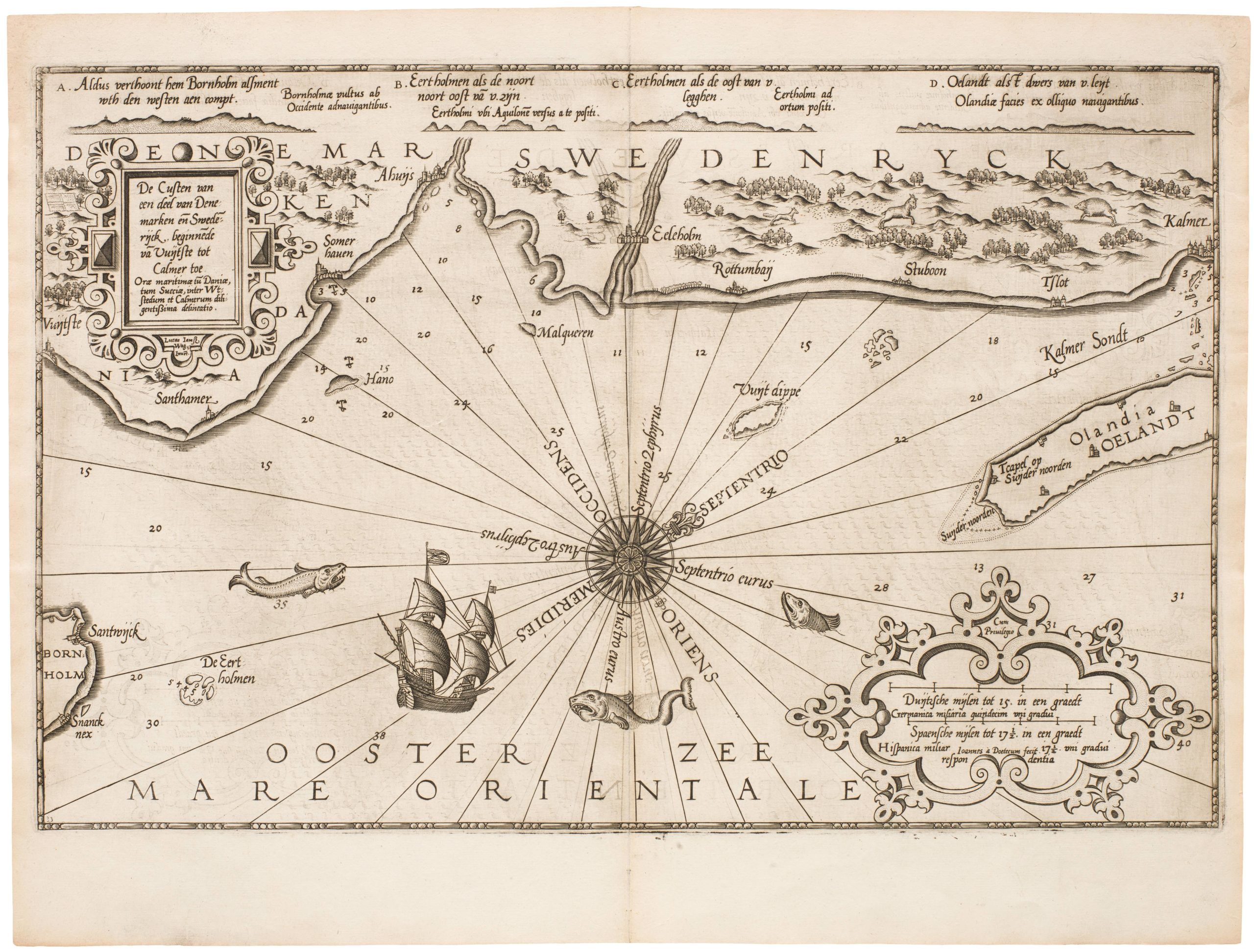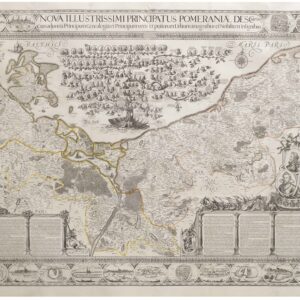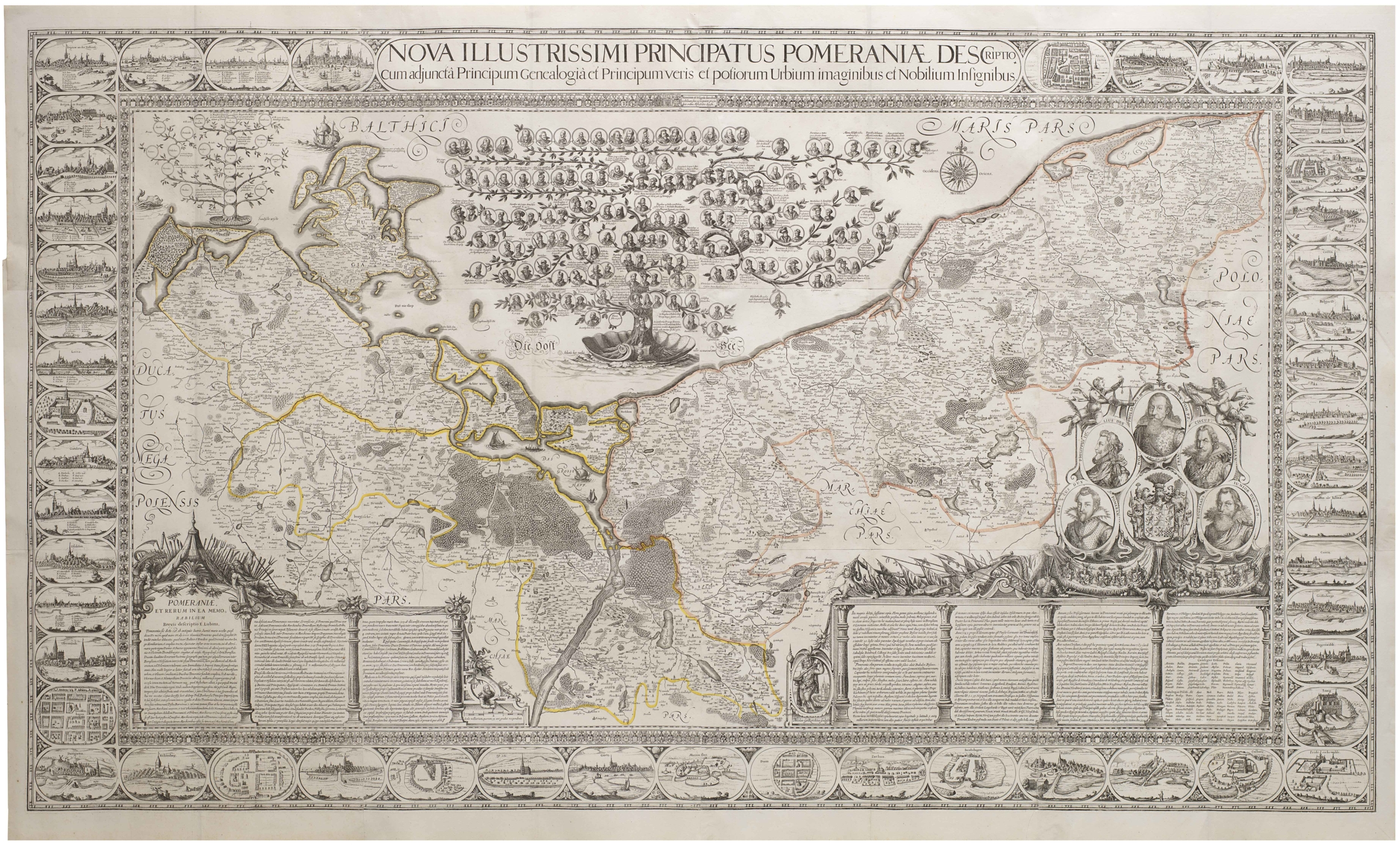Absolutely gorgeous 1956 railroad map of Spain and Portugal with Francoist coat-of-arms.
Mapa de los ferrocarriles en explotación, construcción y proyecto en España y Portugal
$775
1 in stock
Description
Gorgeous, large-format folding railroad map of the Iberian Peninsula complete with its original case. Published at a time when the railway network was nationalized under the dictatorship of Francisco Franco, the map title features the traditional escutcheon (arms of Castile, León, Aragon, Navarre and Granada) and the Pillars of Hercules with the motto Plus Ultra, together with other Francoist symbols, namely: the motto “Una Grande Libre,” the Eagle of St. John, and the yoke and arrows of the Catholic Monarchs which were also adopted by the Falangists.
The history of rail transport in Spain begins in 1848 with the construction of a railway line between Barcelona and Mataró, in 1852 the first narrow gauge line was built, in 1863 a line reached the Portuguese border. By 1864 the Madrid-Irun line had been opened, and the French border reached.
During the Spanish Civil War in the 1930s the railway network was extensively damaged. Immediately after the war Francoist Spain nationalized the broad gauge network, and in 1941 RENFE was formed. Narrow gauge lines were nationalized in the 1950s, later being grouped to form FEVE.
It took many years for the railway system to recover from the war; during the 1950s it was common to see intercity express trains hauled by 100-year-old steam locomotives on poor worn-out track.
With insets of important urban connections. Includes part of Morocco. Published by the Instituto Geográfico y Catastral.
Cartographer(s):
Alfredo Forcano Catalán was a statistician and cartographer for the Spanish government active following the Spanish Civil War.
Condition Description
On contemporary linen with original case. Wear at folds.
References
















